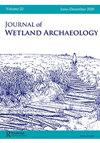Dead People in the Bogs: Network Report
Q1 Arts and Humanities
引用次数: 1
Abstract
resemble us living human beings and they are occasionally linked with violent deaths. Some interpretations suggest they were outcasts or sacrificial victims, others that they were simply victims of drowning. In October 2009 a workshop on the theme ‘Dead People in the Bogs’ was held at Stockholm University. The overall aim was to work out where future research into bog bodies would go, and where the research is for the moment. The format of the workshop was a series of short lectures illustrating different aspects of research, followed by small group discussions around three themes. The first theme, from paper-bodies to the study of complex human remains, dealt with issues of source-criticism and how the material should be approached in order to secure a stable platform for interpretation. Research has through the years focused on the phenomena of bog bodies, however, recent studies have shown that the current record is not at all reliable. Earlier researchers might have been too lax in their source criticism, accepting far more bog bodies than there is evidence for. The material needs to be critically re-examined. The question is what would such a critical survey contain and what would a renewal of the sources involve? The second theme was focussed on how we can form the questions in order to develop new fields of research. This theme was called ‘Turning People into Bodies: Natural Processes, Violence, Forgetting and Remembering’. What is the meaning of the variability in the treatment of the dead? Are all wetlands the same, or do they have different meanings? Who among the dead were forgotten and who remembered? Journal of Wetland Archaeology 10, 2011, 152–153沼泽中的死人:网络报道
与我们人类相似,它们偶尔与暴力死亡联系在一起。一些解释认为他们是被遗弃的人或祭祀的受害者,另一些解释认为他们只是溺水的受害者。2009年10月,在斯德哥尔摩大学举办了一个主题为“沼泽中的死人”的讲习班。总的目标是确定未来对沼泽尸体的研究将走向何方,以及目前的研究进展如何。讲习班的形式是一系列简短的讲座,说明研究的不同方面,然后围绕三个主题进行小组讨论。第一个主题,从纸体到复杂人类遗骸的研究,处理了来源批评的问题,以及如何处理材料,以确保一个稳定的解释平台。多年来,研究一直集中在沼泽体现象上,然而,最近的研究表明,目前的记录一点也不可靠。早期的研究人员可能对他们的来源批评过于宽松,接受了远远超过证据的沼泽体。这些材料需要严格地重新检查。问题是,这样一个批判性的调查将包含什么内容,资源的更新将涉及什么内容?第二个主题集中在我们如何形成问题,以发展新的研究领域。这个主题被称为“把人变成身体:自然过程、暴力、遗忘和记忆”。在对待死者的方式上的变化是什么意思?所有的湿地都是一样的,还是有不同的含义?死者中谁被遗忘,谁还记得?湿地考古学报,2011,152-153
本文章由计算机程序翻译,如有差异,请以英文原文为准。
求助全文
约1分钟内获得全文
求助全文
来源期刊

Journal of Wetland Archaeology
Arts and Humanities-Archeology (arts and humanities)
CiteScore
1.40
自引率
0.00%
发文量
6
期刊介绍:
The Journal of Wetland Archaeology publishes a wide range of contributions in all fields of wetland archaeology. It includes scientific and methodological features, geoprospection, environmental reconstruction, wetland hydrology, cultural aspects of wetland archaeology, as well as conservation, site management, legislation, and site protection. All periods and all geographic regions are covered.
 求助内容:
求助内容: 应助结果提醒方式:
应助结果提醒方式:


